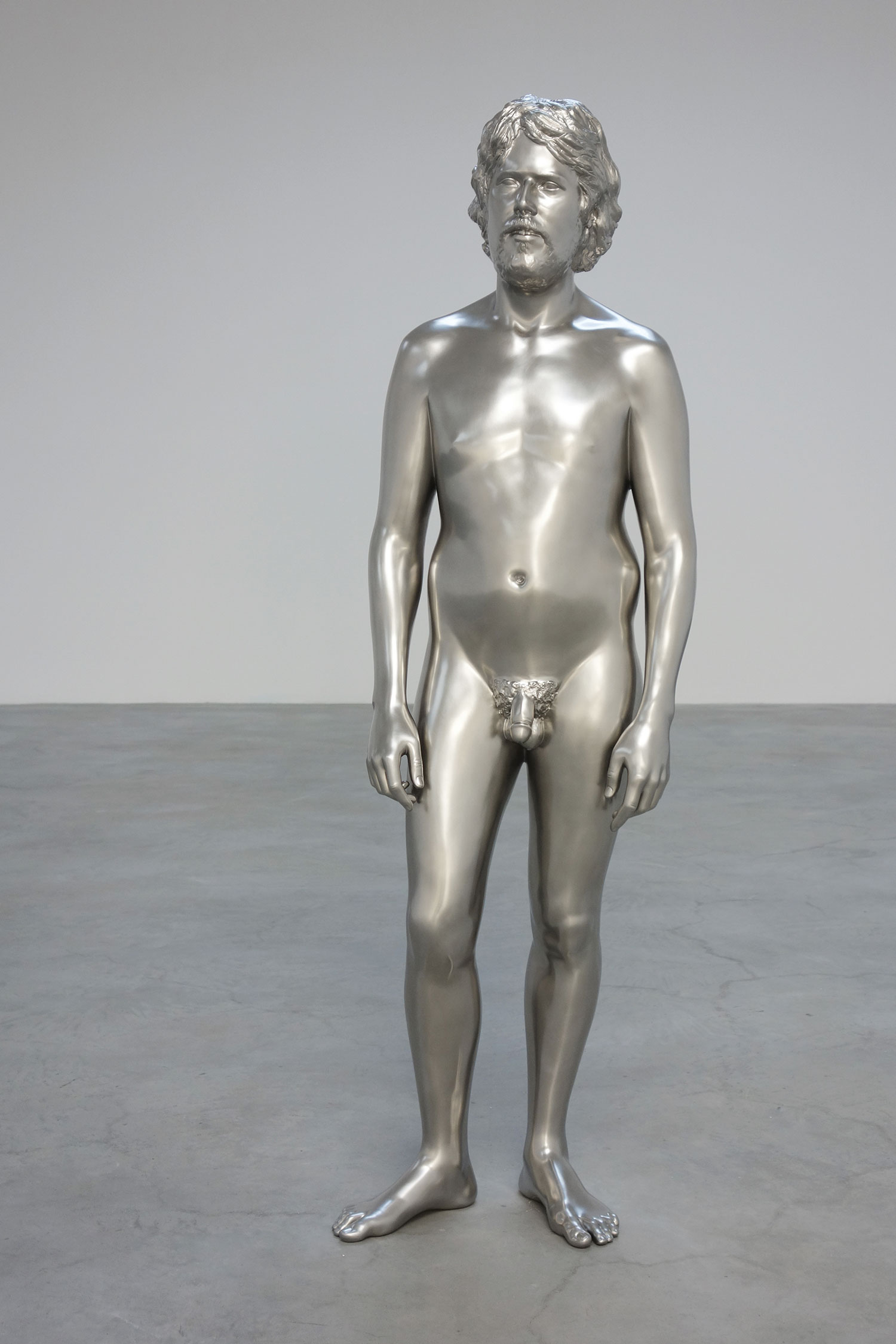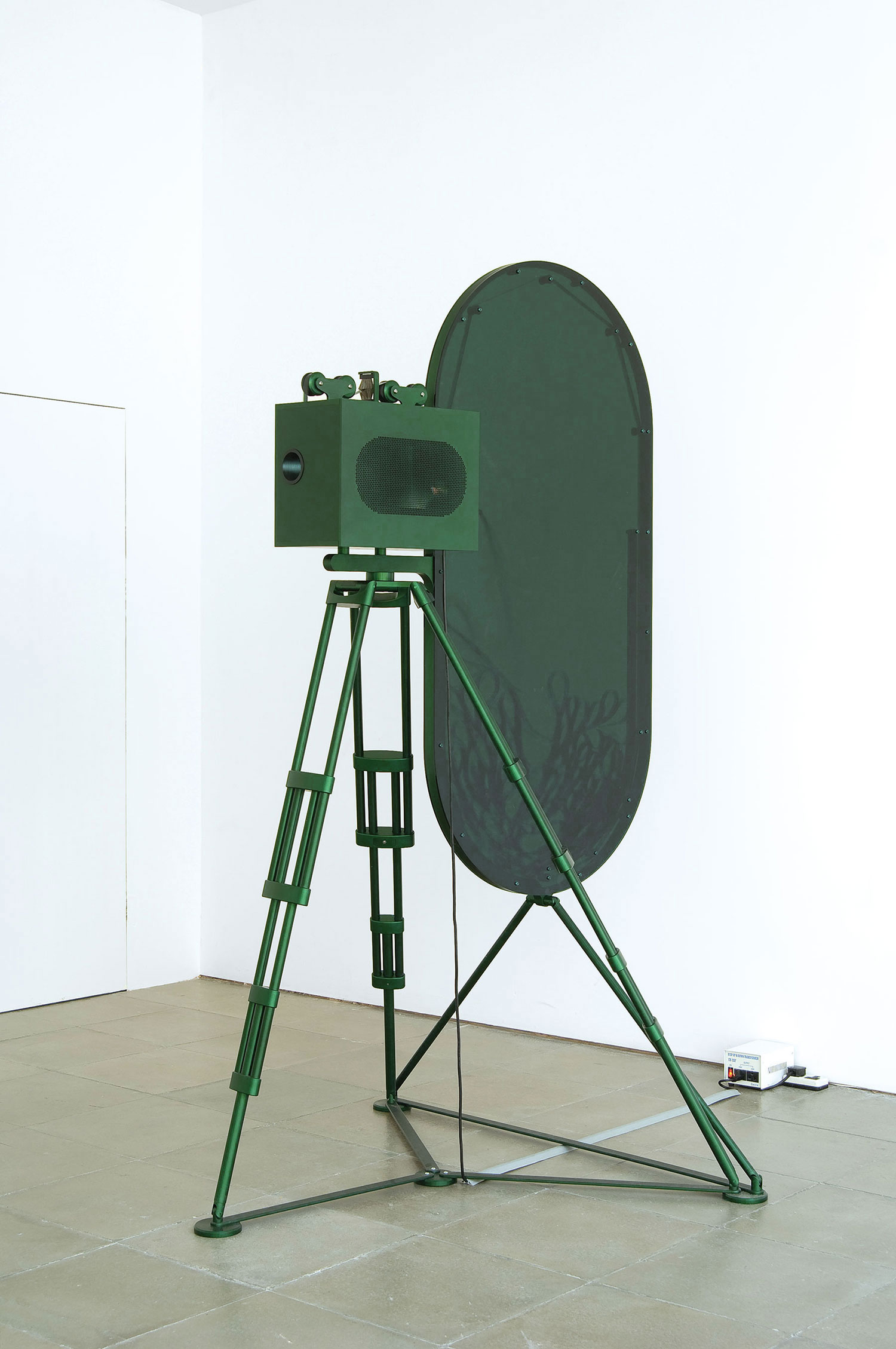In 1994, retired football star O.J. Simpson lead police on a car chase through Los Angeles in a white Ford Bronco. He had been accused of the double murder of his former wife Nicole Brown Simpson and her friend (presumed lover) Ron Goldman. The chase was at a fairly low speed, and the world watched as a helicopter flew overhead broadcasting the entire event live on television.
Nate Lowman was 15 years old during the Simpson escapade. It must have made quite an impression, because for the opening of his major solo exhibition titled “I wanted to be an artist but all I got was this lousy career,” the original O.J. Simpson Bronco sat gleaming white against the perfectly manicured lawn outside of the Brant Foundation. The Bronco, rented for the exhibition, is a modern-day relic that silently comments on celebrity mythology. In the context of an exhibition, the vehicle suggests the histrionically overwrought, voyeuristic tension between the general public and celebrity culture — us versus them.
It’s not difficult to be reminded of the us-versus-them mentality in the rolling hills of Greenwich, Connecticut, one of the richest towns in America. Judging from the amount of work on display at the Brant Foundation Art Study Center, it seems Lowman has been quite busy. Two floors of the interior are filled with his artwork, tastefully installed, in some places extending nearly floor to ceiling. For a young artist working with a revisionist punk aesthetic that comments on popular culture, religion, history and politics, the work is quite sophisticated. The installation is somewhat like a very recently buried time capsule; overtly diaristic qualities somehow avoid direct emotion. Lowman addresses not only the art world and recent history but also his own place within these constructs. Whether the intent is social commentary or documentation doesn’t necessarily matter. Working with a variety of media ranging from painting, collage and sculpture, his materials range from stretched canvases to large, metal sculptures made from New York City tow truck equipment. His navigation between high and low is as relevant to art history as his interest in comparing bullet holes with Swiss cheese. It’s almost impossible to look at Nate Lowman’s work and not think of the infamous Andy Warhol. Part of Lowman’s large installation titled Four Seasons (2009-2012) takes on subjects ranging from an individual falling from the World Trade Center during 9/11 to a 2005 movie poster for a horror film called The Descent.
The lower level of the exhibition is less of an aggregation of found images and intimates a more traditional contemplation of painting and sculpture. Lowman fine-tunes narrative content as a symbolic rather than figurative journey. Notable here are perfectly stretched painted canvases made to reinterpret pine tree air fresheners and the globally recognized Apple computer logo. By physically removing the figure he subtly reveals more about the stereotypes that assist in defining personal — yet global — experience. In acts of self-commemoration and irony, Lowman conjures moments of nostalgia (whether imposed or actual) through humor and semiotics. Though we may not often frequent his world, we live in it vicariously on an almost daily basis.




